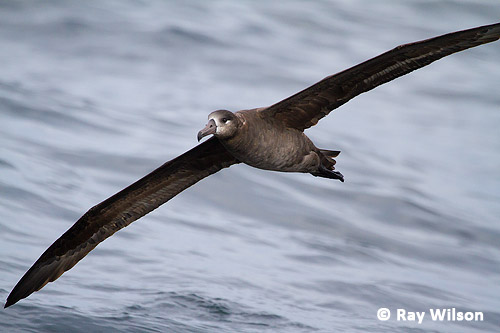
- Home
- Workshops / Tours
- Diary / Blog
- Galleries
- Foreign Trips
- Tasmania 2016
- NE Queensland 2016
- Western Alps 2016
- NE Spain 2016
- Australia's Wet Tropics 2015
- Australia's Top End 2015
- SW Australia 2015
- Switzerland 2015
- Andalucia 2015
- Belize 2015
- Australia 2014
- Switzerland 2014
- Belize 2014
- Bahama Islands 2014
- Switzerland 2013
- Ecuador 2012-2013
- Florida 2011-2012
- Vancouver Island 2011
- Australia 2010
- Peru 2008
- Bulgaria 2007
- Lesvos 2006
- California 2006
- New Zealand 2005
- Extremadura 2005
- Goa, India 2004
- The Gambia 2003
Vancouver Island, Canada
7th-25th September 2011
Ucluelet Pelagic Seabird Trip
Black-footed Albatross (Phoebastria nigriceps)
On a wet, dark and windy Sunday morning I joined 100 other birders for a pelagic seabird trip organised as a fundraiser for WildResearch. Thankfully, the drizzly rain stopped just as we were leaving the harbour at 7am and it remained dry the rest of the day. The wind, however, did make it a bit of a rollercoaster ride as we steamed out on mountainous seas towards the La Perouse Bank, 37km offshore.
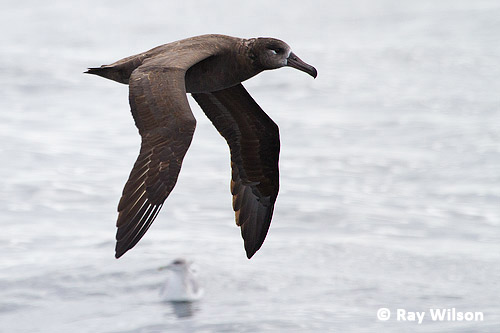
Black-footed Albatross (Phoebastria nigriceps)
Once we reached our destination, we chuntered around in slow circles for 3hrs while the crew threw fish offal overboard to attract the birds close to the boat. It wasn't long before the first of several Black-footed Albatrosses arrived and put on a prolonged display giving everyone excellent close views.
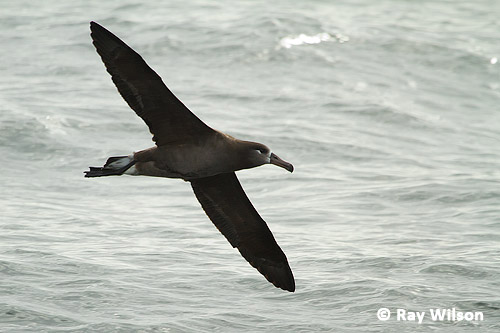
Black-footed Albatross (Phoebastria nigriceps)
Unfortunately, the only Sabine's Gull seen on the trip wasn't quite so cooperative and only stayed a short time, but I was luckily quite well positioned at the stern of the ship to get a couple of decent shots before it drifted off into the distance.
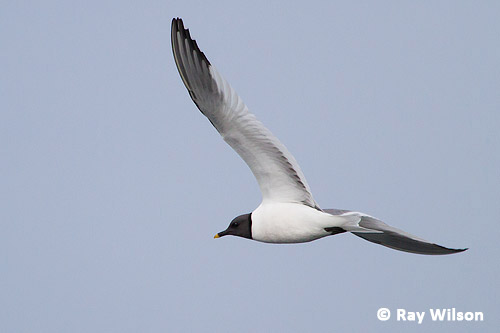
adult Sabine's Gull (Xema sabini)
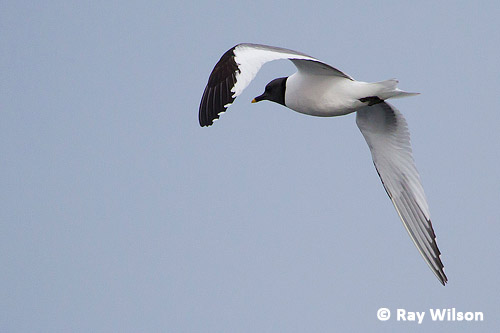
adult Sabine's Gull (Xema sabini)
In total, we saw 3 species of shearwater on the trip: Sooty, Pink-footed and Buller's. Of these, Buller's Shearwater is the scarcest in south-western Canadian waters. Buller's Shearwaters seen at this time of year in the North Pacific are all non-breeding birds that have lingered off the North American coast instead of migrating back south to their breeding grounds on the Poor Knight Islands off the north coast of New Zealand. Several images Buller's Shearwater can be seen in the bird gallery but they were all taken in New Zealand waters, since all the images I got this time were pretty mediocre quality.
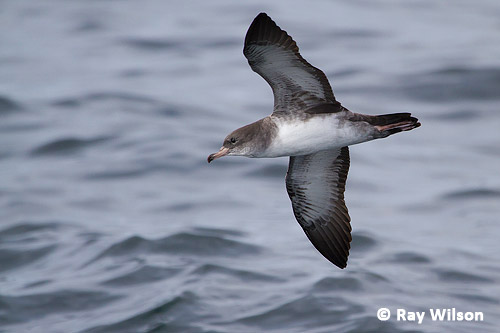
Pink-footed Shearwater (Puffinus creatopus)
Pink-footed Shearwater is easily distinguished from the much commoner Sooty Shearwater by its mottled white underparts, pink feet and two toned bill. Pink-footed Shearwaters breed only on the Mocha and Juan Fernandez Islands off the coast of Chile and disperse northwards to spend the Austral winter (April - November) off the coast of North America from California to Oregon with a few reaching as far north as the Gulf of Alaska.
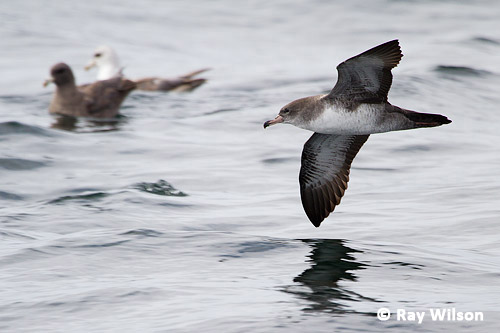
Pink-footed Shearwater (Puffinus creatopus)
Sooty Shearwater has a more global distribution and is very common in both the Pacific and Atlantic Oceans. Its principle breeding sites are on islands off southern Chile and the sub-Antarctic islands of New Zealand.
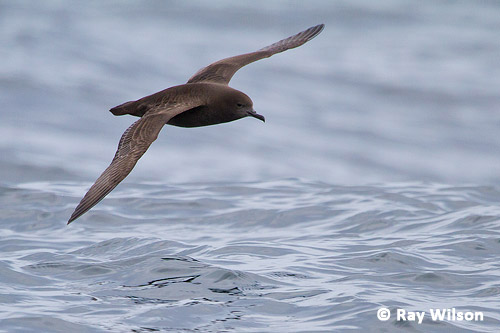
Sooty Shearwater (Puffinus griseus)
Most of the Sooty Shearwaters I saw on the trip were on the journey out when it was just about impossible to photograph anything due to the wildly rocking boat necessitating at least one hand to be occupied in hanging onto a bolted-down fixture to prevent myself being thrown across the deck. Once out at the La Perouse Bank, their numbers seemed to dwindle and Pink-footed Shearwaters were the more common of the two.
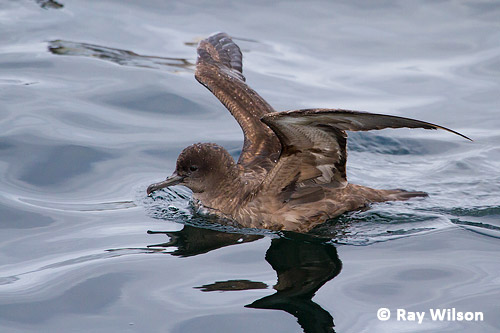
Sooty Shearwater (Puffinus griseus)
dark morph Northern Fulmar (Fulmarus glacialis rodgersii)
By far the commonest species out at La Perouse Bank was the Northern Fulmar, with dark morph birds outnumbering the light morphs.
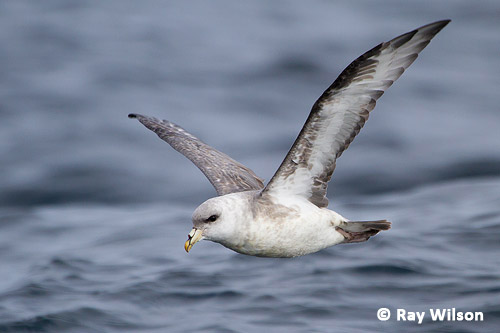
light morph Northern Fulmar (Fulmarus glacialis rodgersii)
The Pacific race of Northern Fulmar, rodgersii, is distinguished from the Atlantic forms by having contrastingly darker tail feathers in all colour morphs.

dark morph Northern Fulmar (Fulmarus glacialis rodgersii)
Other notable species I saw on the trip but didn't manage to get photos of included South Polar Skua and Tufted Puffin.
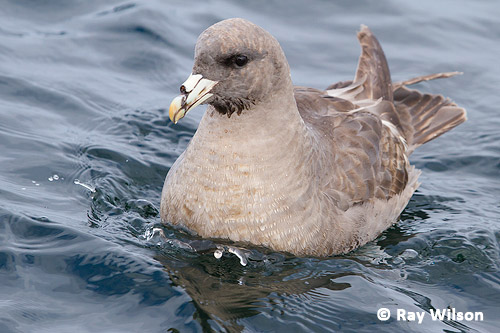
dark morph Northern Fulmar (Fulmarus glacialis rodgersii)
Ray Wilson owns the copyright of all images on this site.
They may not be used or copied in any form without prior written permission.
raywilsonphotography@googlemail.com
